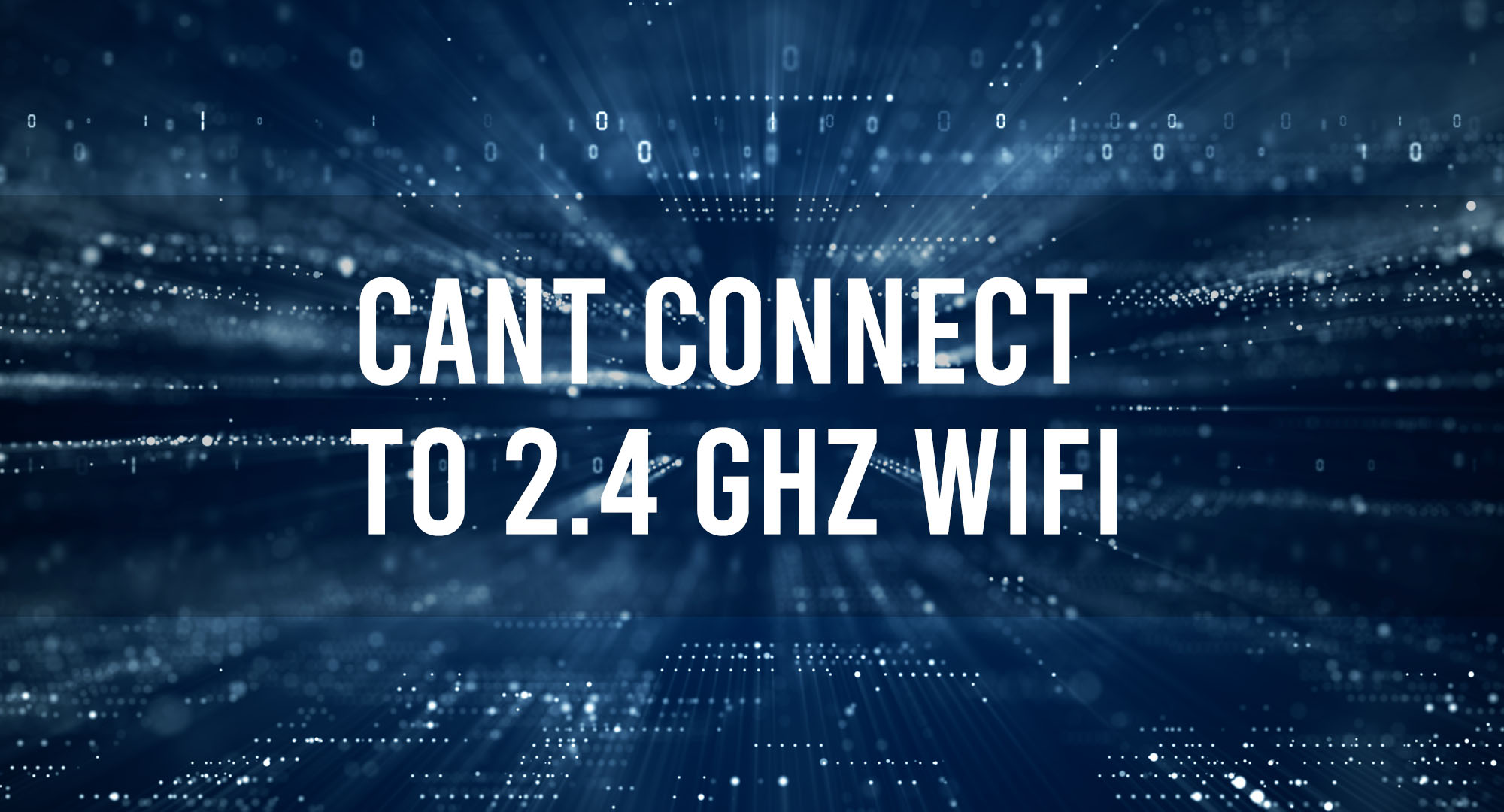We’ve all been there, right? You’re in the middle of an important online meeting or a gripping multiplayer game, and suddenly, your WiFi decides to take a vacation. Frustrating, isn’t it? Well, let’s get into the nitty-gritty of 2.4 GHz WiFi and see if we can’t help you understand and fix those pesky connection issues.
What is 2.4 GHz WiFi?
Table of Contents
Let’s start with some basics. WiFi operates in frequency bands – think of these like invisible highways that carry your data back and forth. The two most common bands are 2.4 GHz and 5 GHz. The 2.4 GHz band is older and offers slower speeds, but it provides a more extended range and can penetrate obstacles better than the 5 GHz band.
Now, the 2.4 GHz band also gets pretty crowded because other household devices like microwaves, cordless phones, and even Bluetooth devices can use it. This can sometimes lead to interference and, consequently, connectivity issues.
Common Reasons Why You Can’t Connect to 2.4 GHz WiFi
There can be a plethora of reasons why you might be having trouble connecting to your 2.4 GHz WiFi. Interference, as mentioned above, can be one significant culprit. Other factors include distance from the router, physical obstacles like walls and furniture, outdated hardware or software, and incorrect WiFi settings on your device or router.
The Role of Your Device in 2.4 GHz WiFi Connectivity Issues
Your device plays a pivotal role in this puzzle. Older devices might not support 5 GHz WiFi and would only connect to the 2.4 GHz band. If your device’s network card or software is outdated, it could struggle to maintain a stable connection. Additionally, incorrect WiFi settings or corrupted network configurations can cause problems.
How Router Settings Can Affect 2.4 GHz WiFi Connection?
Routers are tricky devices – powerful, but with a complex array of settings that can impact your WiFi connection. Features like band steering can push your devices away from the 2.4 GHz band. If too many devices are on the 2.4 GHz band, it can get congested, causing slow speeds and disconnects. Other settings like the WiFi channel or security type can also affect your connection.
Troubleshooting Tips: Restarting Your Router and Devices
Restarting or power cycling your devices can solve a multitude of sins. This process clears temporary configurations and can often resolve minor glitches. So, if you’re having trouble connecting, restart your device and router. Remember to wait a few minutes before turning them back on. It’s a simple step, but you’d be surprised at how often it works!
Exploring Advanced Solutions: Changing WiFi Channel and Frequency
If the issue persists, it’s time to explore some advanced solutions. Routers broadcast WiFi over different channels in the 2.4 GHz band. If your channel is congested or experiences interference, changing the WiFi channel can help.
- Access your router’s settings by typing your router’s IP address into a web browser.
- Navigate to the wireless settings and find the channel selection.
- Change the channel to a less congested one, typically 1, 6, or 11 for 2.4 GHz WiFi.
Also, some routers allow you to adjust the transmission power. Higher power means a more substantial WiFi signal, but it can also lead to more interference.
How to Seek Professional Help for 2.4 GHz WiFi Connection Problems
If none of these steps work, it might be time to seek professional help. Start with your ISP’s technical support – they can remotely test your connection and often identify and fix many issues. If they can’t resolve the problem, a local IT specialist or the router manufacturer’s support may be able to assist.
Remember, technology is a fantastic tool, but it’s not flawless. Understanding how it works can make troubleshooting a less daunting task. So the next time your device refuses to connect to your 2.4 GHz WiFi, you’ll know exactly what to do. Embrace the challenge, learn from it, and you’ll become the master of your tech universe in no time
Frequently Asked Questions
Why is my device not connecting to 2.4 GHz WiFi?
Your device may not connect to 2.4 GHz WiFi due to several reasons, including physical obstructions, interference from other devices, outdated WiFi drivers, or incorrect router settings.
How can I improve my 2.4 GHz WiFi connection?
You can improve your 2.4 GHz WiFi connection by updating your WiFi drivers, changing your WiFi channel to avoid congestion, and ensuring your device is within range of the router.
When should I seek professional help for 2.4 GHz WiFi connection issues?
If you’ve tried basic troubleshooting and still can’t connect to your 2.4 GHz WiFi, it may be time to seek professional help. A qualified technician can diagnose and fix complex issues.
Conclusion
In conclusion, maintaining a smooth 2.4 GHz WiFi connection involves understanding the basics, troubleshooting effectively, and knowing when to seek professional help. With these tips, you should be well-equipped to tackle any WiFi issues that come your way. Remember, the key is to stay patient and persistent. Happy surfing!

Timothy is a tech enthusiast and has been working in the industry for the past 10 years. He has a vast knowledge when comes to technology and likes to help people with this knowledge.
